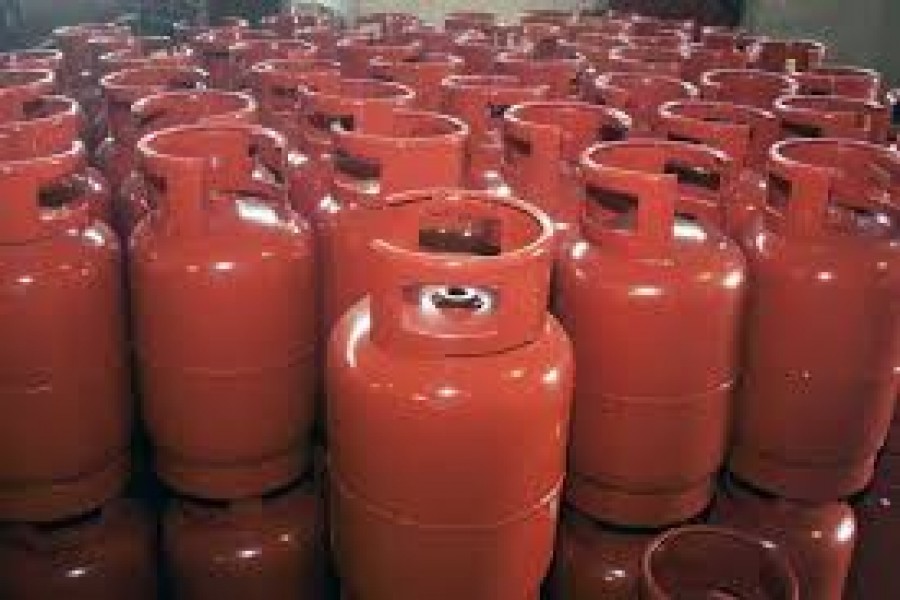During the official visit of Bangladesh Prime Minister Sheikh Hasina to India, an agreement to export Liquefied Petroleum Gas (LPG) to the Indian state of Tripura was signed between the two sides on October 05, 2019. Both the Prime Ministers Sheikh Hasina and Narendra Modi also inaugurated through video link three bilateral development partnership projects including 'Import of Bulk LPG from Bangladesh'.
A section of people including the media mixed up the LPG export deal with natural gas. However, Prime Minister Hasina in her press conference on October 08, 2019 in Dhaka clarified the issue. She explained that the deal to export LPG to India would be an addition to the existing export basket for Bangladesh. The imported LPG in bulk by Bangladeshi private firms would be bottled in Bangladesh and transported to Tripura by road. Thus Bangladesh would be benefited from value addition in LPG trade. As reported, two private companies in Bangladesh 'Omera Petroleum' and 'Beximco LPG' intend to export LPG to the landlocked Indian state of Tripura, and Indian Oil Corporation will be distributing the bottled LPG to their consumers. The Bangladesh companies have carried out trial supply of LPG to Tripura.
Indian Ministry of External Affairs published on October 05, 2019 a document titled 'The India-Bangladesh Joint Statement during official visit of Prime Minister of Bangladesh to India'. Among others, the document states that 'both the Prime Ministers inaugurated a project on sourcing bulk LPG from Bangladesh to Tripura by using Bangladesh trucks and hoped that such energy links will boost cross-border energy trade'.
LPG is a highly flammable mixture of two hydrocarbon gases 'propane' and 'butane' and it is used for cooking and transport, as well as in the petrochemical industry. It is mainly produced as a by-product while refining crude petroleum in the oil refineries. LPG is gaseous at normal ambient temperature and atmospheric pressure. It is kept as liquid in the containers/bottles by applying moderate pressure. LPG is clean, odourless, colourless, nonpoisonous gas and it is heavier than air. For safety purposes and to detect its presence easily, a distinctive smell producing substance called 'ethyl mercaptan' is added with LPG so that small leakage of the flammable gas to atmospheric air can be detected.
As the natural gas (mainly methane) production started declining in Bangladesh and the government has decided not to connect pipe gas for domestic consumers, LPG import was encouraged for households users. Bangladesh has been using LPG mainly as cooking gas. LPG was first introduced by state-owned Bangladesh Petroleum Company (BPC) back in the 1980s, but it did not gain popularity until a few years ago, when the government decided to restrict new gas connections to households. As per information from the Energy and Mineral Resources Division of the government, LPG use has significantly been increased in the country. Energy Secretary Abu Hena M Rahmatul Munim said a few months ago to the local media that 'the country's LPG use rose to around 1.0million tonnes in 2018, which was only 47,000 tonnes in 2009 and now the demand for LPG has increased to 3.0 million tonnes'.
Bangladesh imports LPG mostly from the middle eastern countries -- Oman and Qatar. A very insignificant quantity of LPG is produced by the Eastern Refinery Ltd (a subsidiary of Bangladesh Petroleum Corporation) and supplied to the consumers. There are 26 companies involved in importing LPG in the country and 18 companies import and bottle LPG at their own plants and supply to the consumers. At present the capacity of LPG bottling in Bangladesh is under-utilised. The export opportunity to Tripura will give a significant boost to the LPG sector. If LPG export to Tripura works well, Bangladesh companies engaged in LPG business may have a scope to expand their market to the other eastern-Indian states. The Bangladeshi companies engaged in LPG business estimate that the annual demand for LPG in Tripura could reach 12 million tonnes. The present infrastructure facilities may allow export of approximately 20 thousand tonnes.
Importing goods and transporting them from West Bengal and Odisa ports through a narrow corridor in Siliguri in West Bengal involves significant cost and time for the eight eastern-Indian states. Such lengthy and costly transportation of goods including LPG does not attract businesses for the India's mainland LPG suppliers. Indian Oil Company earlier tried to transport LPG through Paradip (in Odisa) and Haldia (in West Bengal) via Chattogram port to eastern Indian states. But they found it commercially unviable. Subsequently, negotiations progressed to use Bangladesh companies involved in LPG business to import LPG through Mongla port and transport bottled LPG to Tripura.
Bangladesh and India have signed Standard Operational Procedure to allow India to use its Chattogram and Mongla ports for transporting cargos to its north eastern regions. The Indian High Commission in Dhaka on October 08, 2019 said that 'the export of LPG from Bangladesh (after importing from abroad) to Tripura is a 'game changer' with a potential to generate jobs and revenue for Bangladesh'.
Mushfiqur Rahman is a mining engineer, and writes on energy and environment issues.


